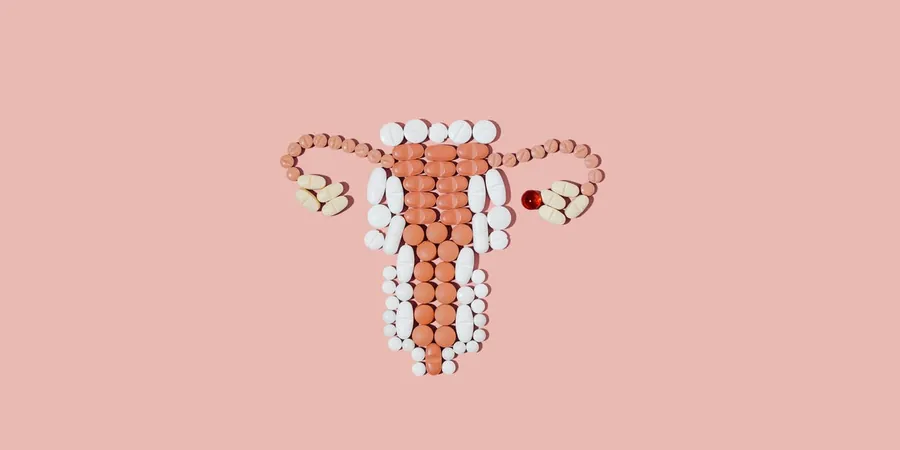
Unleashing the Power of Ovaries: A Game-Changer in Anti-Aging Research?
2024-11-22
Author: Sarah
Unleashing the Power of Ovaries: A Game-Changer in Anti-Aging Research?
Researchers are turning conventional wisdom on its head with a groundbreaking approach to accelerate anti-aging drug testing: focusing on ovaries instead of traditional animal models.
A revolutionary study published in Nature Aging reveals that by examining ovarian aging, scientists can rapidly evaluate potential longevity treatments, opening doors for faster clinical applications. The research, led by Columbia University's geneticist, Yousin Suh, highlights the ovaries as an unprecedented testing ground, providing a shortcut in understanding how anti-aging drugs might work in humans.
Why Ovaries Could Hold the Key to Longevity
For decades, longevity researchers have recognized the ovary as one of the fastest-aging organs in the body. Unlike lab mice, which may take years to show the effects of aging, human ovaries exhibit these processes in a matter of months. This rapid pace of aging allows researchers to assess drug efficacy more quickly and efficiently than ever before.
Dr. Francesca Duncan of Northwestern University emphasizes that this pivotal study illustrates a "highly conserved pathway" of aging within the ovary. Aging changes previously overlooked due to societal perceptions of age are now being recognized for their significance in the overall aging process.
Suh's research has meticulously mapped out the aging process on a cellular and molecular level in human ovarian tissues, comparing samples from younger women (aged 23-29) with those from older, reproductively aged women (49-54). Their findings spotlight the crucial role of mTOR signaling, which shows heightened levels in older ovaries, signaling a compelling model for testing longevity drugs.
"People need to understand that our aim isn't just about extending fertility; it's about slowing down the overall aging process,” Suh reiterated.
Faster Tests, Better Treatments: The Future of Anti-Aging Research
The implications of this research are staggering. If treatments prove effective on ovarian tissue, it stands to reason they could also provide systemic benefits throughout the body. The findings allow for real-time insights into how anti-aging interventions are working, potentially revolutionizing the entire field of longevity research.
Suh envisions a future where anti-aging supplements and drugs, like metformin and NAD+ boosters, can be more efficiently tested for efficacy in women. Early studies are already underway, including an ongoing clinical trial involving middle-aged women taking rapamycin—an immunosuppressive drug with potential anti-aging properties.
While the immediate outcomes are yet to be fully revealed, initial trends suggest encouragement as researchers monitor changes in ovarian health and function over a set timeline.
A Word of Caution: More Research Needed
Despite the exciting prospects, researchers like Duncan urge caution. While ovaries being used as a model for general aging is enticing, the scientific community must conduct thorough investigations to understand how ovarian changes correlate directly with overall health.
The landscape of anti-aging treatments is rife with unregulated products from influencers and wellness clinics, yet no drugs have been officially approved in the U.S. to combat aging itself. As the promise of testing on ovarian tissue unfolds, the hope is to establish a more reliable, scientific foundation for those seeking to extend their healthspan.
In summary, as scientists harness the potential of ovarian aging to unlock the secrets of longevity, we may soon find ourselves on the cusp of a new frontier in anti-aging research—and the prospect of a healthier, longer life could be only a drug away!




 Brasil (PT)
Brasil (PT)
 Canada (EN)
Canada (EN)
 Chile (ES)
Chile (ES)
 España (ES)
España (ES)
 France (FR)
France (FR)
 Hong Kong (EN)
Hong Kong (EN)
 Italia (IT)
Italia (IT)
 日本 (JA)
日本 (JA)
 Magyarország (HU)
Magyarország (HU)
 Norge (NO)
Norge (NO)
 Polska (PL)
Polska (PL)
 Schweiz (DE)
Schweiz (DE)
 Singapore (EN)
Singapore (EN)
 Sverige (SV)
Sverige (SV)
 Suomi (FI)
Suomi (FI)
 Türkiye (TR)
Türkiye (TR)